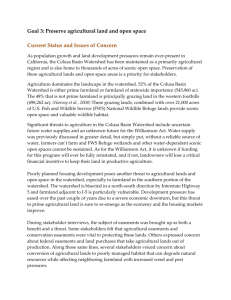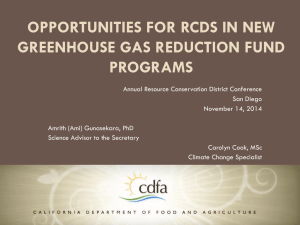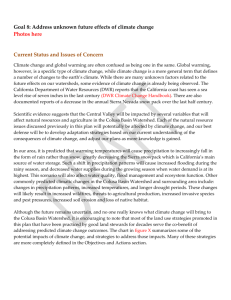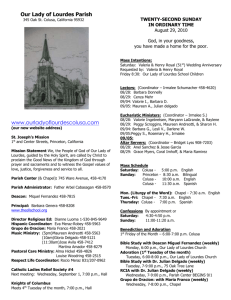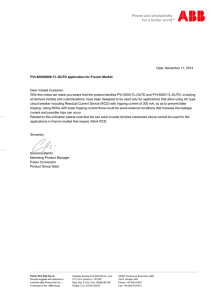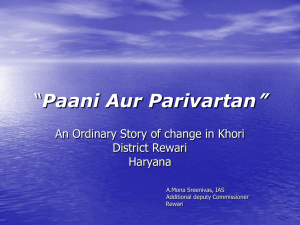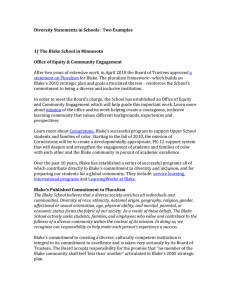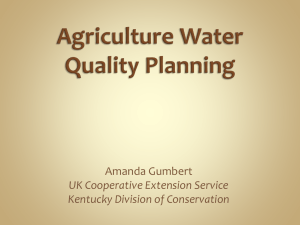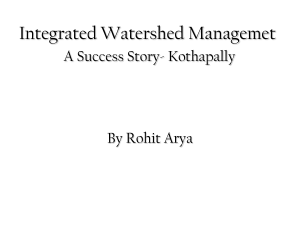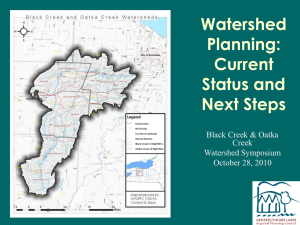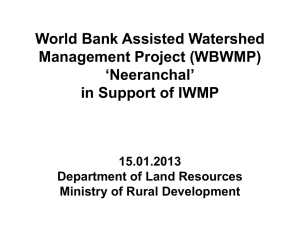Goal #1: Protect, maintain and improve water quality
advertisement
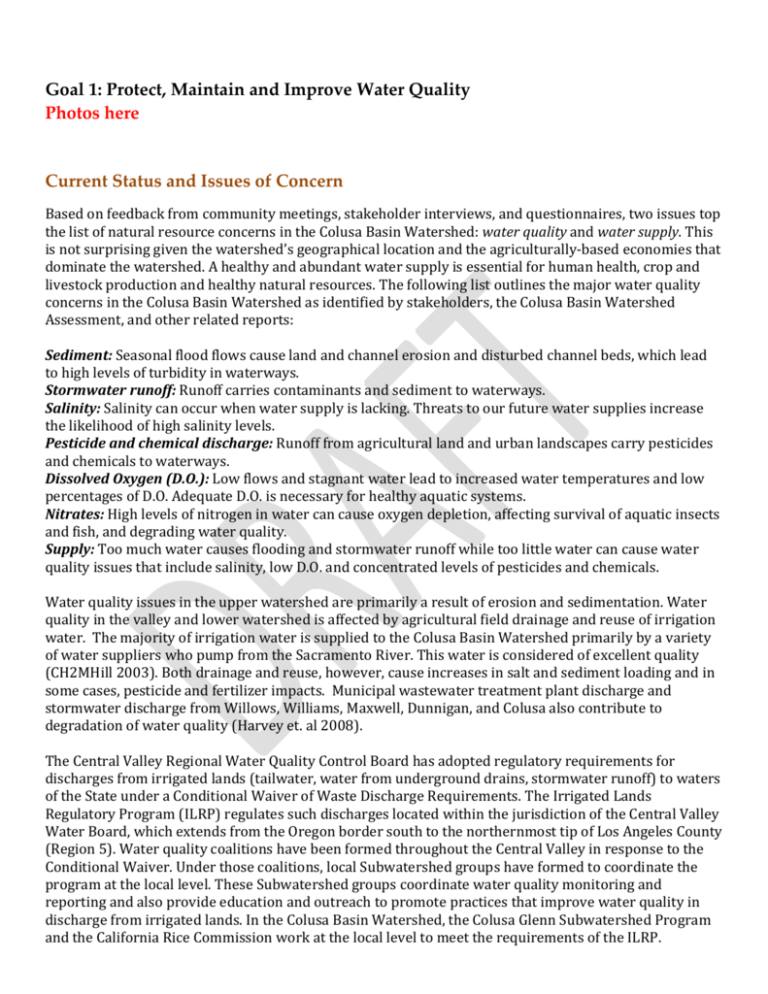
Goal 1: Protect, Maintain and Improve Water Quality Photos here Current Status and Issues of Concern Based on feedback from community meetings, stakeholder interviews, and questionnaires, two issues top the list of natural resource concerns in the Colusa Basin Watershed: water quality and water supply. This is not surprising given the watershed’s geographical location and the agriculturally-based economies that dominate the watershed. A healthy and abundant water supply is essential for human health, crop and livestock production and healthy natural resources. The following list outlines the major water quality concerns in the Colusa Basin Watershed as identified by stakeholders, the Colusa Basin Watershed Assessment, and other related reports: Sediment: Seasonal flood flows cause land and channel erosion and disturbed channel beds, which lead to high levels of turbidity in waterways. Stormwater runoff: Runoff carries contaminants and sediment to waterways. Salinity: Salinity can occur when water supply is lacking. Threats to our future water supplies increase the likelihood of high salinity levels. Pesticide and chemical discharge: Runoff from agricultural land and urban landscapes carry pesticides and chemicals to waterways. Dissolved Oxygen (D.O.): Low flows and stagnant water lead to increased water temperatures and low percentages of D.O. Adequate D.O. is necessary for healthy aquatic systems. Nitrates: High levels of nitrogen in water can cause oxygen depletion, affecting survival of aquatic insects and fish, and degrading water quality. Supply: Too much water causes flooding and stormwater runoff while too little water can cause water quality issues that include salinity, low D.O. and concentrated levels of pesticides and chemicals. Water quality issues in the upper watershed are primarily a result of erosion and sedimentation. Water quality in the valley and lower watershed is affected by agricultural field drainage and reuse of irrigation water. The majority of irrigation water is supplied to the Colusa Basin Watershed primarily by a variety of water suppliers who pump from the Sacramento River. This water is considered of excellent quality (CH2MHill 2003). Both drainage and reuse, however, cause increases in salt and sediment loading and in some cases, pesticide and fertilizer impacts. Municipal wastewater treatment plant discharge and stormwater discharge from Willows, Williams, Maxwell, Dunnigan, and Colusa also contribute to degradation of water quality (Harvey et. al 2008). The Central Valley Regional Water Quality Control Board has adopted regulatory requirements for discharges from irrigated lands (tailwater, water from underground drains, stormwater runoff) to waters of the State under a Conditional Waiver of Waste Discharge Requirements. The Irrigated Lands Regulatory Program (ILRP) regulates such discharges located within the jurisdiction of the Central Valley Water Board, which extends from the Oregon border south to the northernmost tip of Los Angeles County (Region 5). Water quality coalitions have been formed throughout the Central Valley in response to the Conditional Waiver. Under those coalitions, local Subwatershed groups have formed to coordinate the program at the local level. These Subwatershed groups coordinate water quality monitoring and reporting and also provide education and outreach to promote practices that improve water quality in discharge from irrigated lands. In the Colusa Basin Watershed, the Colusa Glenn Subwatershed Program and the California Rice Commission work at the local level to meet the requirements of the ILRP. Considerations Focus on multi-use and multi-benefit solutions Outreach, education and community awareness are necessary elements in protecting water quality Groundwater and surface water quality are equally important Best Management Practices (BMPs) should be encouraged Many regulatory issues exist in the realm of water quality Objectives and Actions Objective #1: Identify Water Quality Issues Action Coordinate with the local Subwatershed Programs to remain aware of sources of water quality impairments Evaluate current conditions and identify methods of improvement Entities involved RCDs RCDs Subwatershed groups Objective #2: Recommend water quality improvement measures for urban and rural areas Action Entities involved Work with City and County Agencies RCDs Support flood control programs RCDs Local governments Support multi-benefit solutions RCDs Objective #3: Provide community awareness of causes of water quality impairment Action Entities involved Provide outreach and Education RCDs Create a Community Awareness Campaign RCDs Promote voluntary actions to prevent pollution RCDs from such sources as: fertilizers, pesticides, motor oil, illegal dumping, soil erosion, hazardous waste, etc. Objective #4: Encourage and implement measures to protect groundwater from contaminants Action Entities involved Support implementation and updates of County RCDs groundwater Management Plans Boards of Supervisors Avoid groundwater overdraft Groundwater users Promote utilization of surface water supplies Improve groundwater infiltration and protect existing recharge areas Encourage proper sealing of abandoned wells Local water authorities RCDs NRCS Landowners and land managers Local Departments of Environmental Health Objective #5: Recommend Best Management Practices (BMPs) for agricultural and rangeland areas to reduce soil erosion and associated sediment loading into drainages Action Entities involved Promote erosion control efforts RCDs Encourage and assist in implementation of BMPs, RCDs including filter strips, grassed waterways, off NRCS stream grazing, etc. Where feasible, restore flood plain connectivity RCDs along streams NRCS Other conservation organizations Landowners and land managers Objective #6: Provide technical advice for implementing BMPs Action Entities involved Work with NRCS to provide local outreach RCDs regarding Farm Bill programs Resources The following resources are available for information and technical assistance: California State Water Resources Control Board http://www.swrcb.ca.gov/ California Department of Water Resources http://www.water.ca.gov/ Colusa Glenn Subwatershed Program 530.934.4601, ext. 120 email: cgsubwatershed@sbcglobal.net Natural Resources Conservation Service Colusa County 100 Sunrise Blvd., Suite B, Colusa CA 95932 530.458.2931 Glenn County 132 North Enright Avenue, Suite C, Willow, CA 95988 530.934.4601 X3 Yolo County 221 W. Court Street, Woodland, CA 95695 530.662.2037 Resource Conservation Districts Colusa County 100 Sunrise Blvd., Suite B, Colusa, CA 95932 530.458.2931 X3 www.colusarcd.org Glenn County 132 North Enright Avenue, Suite C, Willow, CA 95988 530.934.4601 X5 www.glenncountyrcd.org Yolo County 221 W. Court Street, Woodland, CA 95695 530.662.2037 www.yolorcd.org U.C. Davis California Rangeland Watershed Laboratory www.rangelandwatersheds.ucdavis.edu County Departments of Environmental Health Colusa County Glenn County Yolo County
